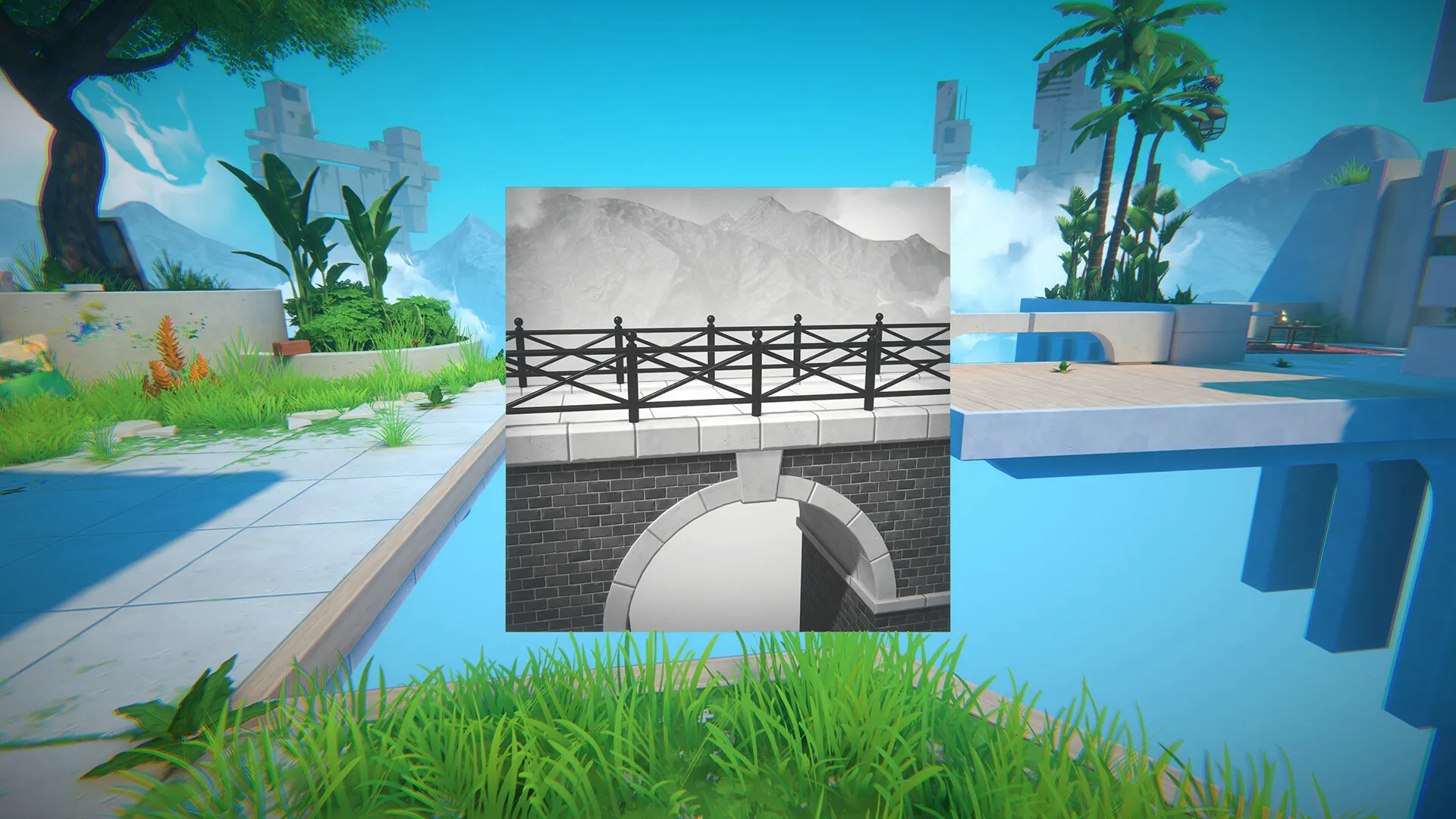In the time since completing A Good Snowman Is Hard To Build, I’ve found myself loading it up briefly just to roam about for a few minutes. Even with all the snowmen built and nothing more to do, I can’t help but visit them, see how they’re doing. Walking about the park, sitting back and enjoying the ambient tunes, and giving out hugs to some snow people is relaxing. Any time I’ve felt depression coming on, I’d just jump in for a few minutes and feel my spirits lift instantly, because everything here is just so cute and heartwarming that I can’t help but smile.
A Good Snowman follows a monster who roams about a walled garden making snowmen. The process is simple. Each area has at least three snowballs of varying sizes. Your job is to roll them through the snow to make them grow large enough to stack them on top of one another. The three snowballs have to be of large, medium, and small sizes. Rolling a snowball through the snow once makes it grow by one size; roll it through the snow twice and it’ll reach its maximum size, meaning it can also be used to clear pathways for smaller snowballs to prevent them from packing on more baggage.
Easy enough, right? Except the spaces you’re given and the placement of the snowballs are tricky. Every area of the park is cramped. Fixtures like birdhouses and baths, trees, and tables limit movement, complicating the creative process. The biggest obstacle, however, are more snowballs. Some puzzles require you to build multiple snowmen in the same area, often with a limited pool of snow to draw from. Luckily, if you make a mistake, you can undo each step individually to remedy the issue instead of being forced to start from scratch every time, which makes finding the solution a less daunting task.
I never felt frustrated, though. Even during the hardest puzzles, running through the same steps again and again in the frail hopes that I might discover a solution, I enjoyed poking around, working out the mechanics. I didn’t encounter the usual sense of helplessness or dismay at being unable to grasp what I’m supposed to do like in so many other puzzle games. Where no matter how many breaks I took, no matter how long I stared at a problem, I couldn’t even begin to figure out what the key might be until I caved and looked it up. I never had those problems with A Good Snowman. Everything just clicked. It did make for a shorter game than I expected (at least until I learned there were far more snowmen to build upon finishing it), but that speaks more to how much I enjoyed it that I wasn’t weighed down with fatigue after a few puzzles, as is usually the case.
Once the snowmen are built, they’re immediately decked out in clothes and accessories to add a touch of personality and individually. Lucy, the very first snowman (or snowwoman, rather), has a straw hat and a piece of hay in her mouth, suggesting she’s a farmer. Andy is the gentlemanly type, sporting a bowtie and top hat. William’s a wizard, Freya’s a Viking, and so on. It’s all very adorable, but it also serves to demonstrate just how important – how real – his creations are to him. The music and camera work exemplify this. When the monster embraces one of his snowmen, the music shifts; it becomes warm and comforting – like a hug between friends or family – the camera slowly zooming in to emphasize the close relationship of the monster and his snow friends. They may be inanimate objects, but they mean something to him. They’re not just creations to be admired, but something more, something special.
It’s a lot like the attachment we foster toward things like toys as children. Sure they may be inanimate objects, but at the time, they were something more. They were special to us in ways beyond merely being a favorite of ours, for reasons we probably couldn’t explain or even grasp. The love and care the monster shows for his snowmen is much the same. It’s the sort of connection that’s hard to explain, but the sort we can all understand – perhaps even relate to. It’s what makes A Good Snowman special, because you come to grow a similar attachment to the snowmen as the monster. You put so much time and energy into making them that it’s hard not to become attached, to feel proud of your accomplishments. Hugging snowmen is as much a way for the player to express their love for their creations as it is to illustrate the bond between the monster and his snowmen. And it feels nice, too.
Which is what ultimately sums up A Good Snowman Is Hard To Build’s appeal. It’s just a feel-good game. Every aspect is so wonderfully uplifting that it’s hard not to receive a constant sense of joy and comfort from it. I said at the top of the review that I often just load it up for a few minutes to roam about and relax, in part to keep depression at bay. But I do mostly because I just like that warm, fuzzy feeling I get from hugging those snowmen. It’s hardly a replacement for the real thing, but sometimes a substitute is enough.






